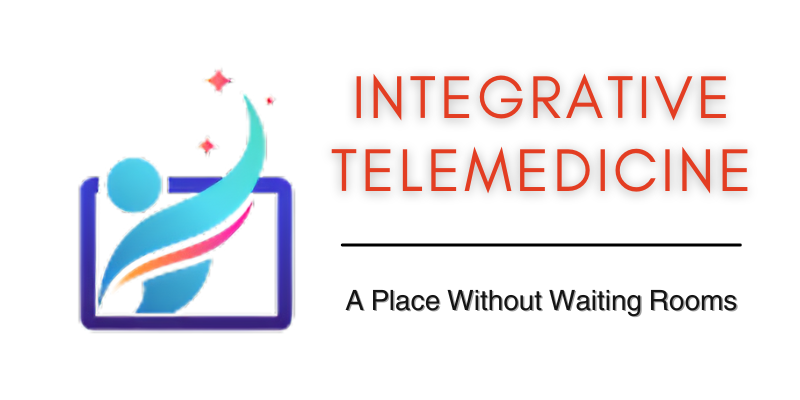
Telemedicine: A Revolution in Healthcare Industry
In today’s fast-paced world, healthcare is evolving at a rapid pace. The emergence of telemedicine has revolutionized the healthcare industry, providing patients with easy access to medical care anytime, anywhere. In this article, we will explore the meaning of telemedicine, its benefits, and how it is transforming healthcare.
Telemedicine is an innovative approach to healthcare delivery that allows patients to consult with healthcare providers through electronic communication technologies such as video conferencing, phone calls, and messaging apps. Telemedicine provides patients with convenient access to medical care, especially for those living in remote or rural areas. It also offers a range of benefits for healthcare providers, including increased efficiency, cost-effectiveness, and improved patient outcomes.
What is Telemedicine?
Telemedicine is the use of electronic communication technologies to provide healthcare services remotely. Telemedicine can be used for a wide range of healthcare services, including diagnosis, consultation, treatment, and monitoring. Telemedicine can be used to connect patients with healthcare providers in real-time or through asynchronous communication.
Types of Telemedicine
There are three main types of telemedicine:
Real-time Telemedicine: Real-time telemedicine involves the use of video conferencing technology to connect patients with healthcare providers in real-time. This type of telemedicine is useful for urgent care and consultations.
Store-and-Forward Telemedicine: Store-and-forward telemedicine involves the use of electronic communication technologies to transmit medical data, such as images and test results, to healthcare providers for review at a later time. This type of telemedicine is useful for non-urgent care and consultations.
Remote Patient Monitoring: Remote patient monitoring involves the use of electronic devices to monitor patients’ health status remotely. Healthcare providers can monitor patients’ vital signs, medication adherence, and other health metrics in real-time.
Benefits of Telemedicine
Telemedicine offers a range of benefits for both patients and healthcare providers, including:
- Increased Access to Healthcare : Telemedicine provides patients with easy access to medical care, regardless of their location. Patients living in remote or rural areas can consult with healthcare providers without having to travel long distances, reducing the barriers to access.
- Cost-Effective : Telemedicine is cost-effective, both for patients and healthcare providers. Patients can save money on transportation and other related expenses, while healthcare providers can save on overhead costs.
- Time-Efficient : Telemedicine is time-efficient, reducing the wait times for appointments and consultations. Patients can consult with healthcare providers in real-time or at a time that is convenient for them, reducing the time spent waiting for appointments.
- Improved Quality of Care : Telemedicine can improve the quality of care provided to patients. Healthcare providers can access patients’ medical data and history, enabling them to provide more accurate diagnoses and personalized treatment plans.
Telemedicine and COVID-19 Pandemic
The COVID-19 pandemic has highlighted the importance of telemedicine in providing healthcare services to patients while minimizing the risk of transmission. Telemedicine has been widely used during the pandemic to provide virtual consultations, monitor patients’ health status, and provide mental health support. Telemedicine has played a critical role in providing care to patients during the pandemic, especially for those who are at higher risk of infection, such as the elderly and those with underlying medical conditions.
Potential Challenges and Concerns
While telemedicine offers many benefits, there are also potential challenges and concerns that need to be addressed. One of the major concerns is the potential for misdiagnosis or delayed diagnosis, especially in cases where physical examination is required. Other concerns include data privacy and security, licensing and regulation, and reimbursement for telemedicine services.
Telemedicine Implementation
The implementation of telemedicine requires careful planning and consideration of various factors, such as technology infrastructure, provider training, and patient education. Healthcare providers need to choose the right technology platforms and ensure that their systems are secure and compliant with data privacy regulations. Providers also need to ensure that they have the necessary equipment, such as cameras and microphones, to provide high-quality telemedicine services.
Legal and Regulatory Framework
The legal and regulatory framework for telemedicine varies across countries and regions. In the United States, for example, the use of telemedicine is regulated at the state level, and providers need to comply with state-specific licensing and regulatory requirements. Providers also need to ensure that they comply with federal regulations, such as the Health Insurance Portability and Accountability Act (HIPAA), which governs the privacy and security of patients’ health information.
Privacy and Security Concerns
Data privacy and security are critical concerns in telemedicine, as patient health information needs to be protected from unauthorized access and disclosure. Healthcare providers need to ensure that their systems are secure and compliant with data privacy regulations, and that they have protocols in place to address data breaches and other security incidents.
Telemedicine Future
The future of telemedicine looks promising, as the technology continues to evolve and become more accessible. Telemedicine has the potential to transform the healthcare industry, making medical care more convenient, cost-effective, and accessible to patients around the world. With the increasing adoption of telemedicine, we can expect to see more innovative applications, such as telemedicine robots, remote surgical procedures, and virtual reality consultations.
Telemedicine for Mental Health
Telemedicine has shown promising results in the field of mental health, providing patients with access to mental health services from the comfort of their own homes. Telemedicine can be used for a range of mental health services, such as therapy, counseling, and medication management. Telemedicine can also be used to provide mental health support to patients in remote or rural areas, where access to mental health services may be limited.
Telemedicine and Chronic Care Management
Telemedicine has also shown promise in the management of chronic conditions, such as diabetes, heart disease, and chronic obstructive pulmonary disease (COPD). Telemedicine can be used to monitor patients’ health status and provide real-time feedback and support. Telemedicine can also be used to provide patients with education and self-management tools, enabling them to better manage their conditions and improve their quality of life.
Telemedicine and Elderly Care
Telemedicine can also be used to provide healthcare services to the elderly, who may have limited mobility or access to medical care. Telemedicine can be used to monitor elderly patients’ health status, provide medication reminders, and connect them with healthcare providers for consultations and follow-up care. Telemedicine can also be used to provide elderly patients with social support and companionship, reducing feelings of loneliness and isolation.
Telemedicine is a game-changer in the healthcare industry, providing patients with easy access to medical care and offering a range of benefits for healthcare providers. Telemedicine has the potential to transform healthcare, making medical care more convenient, cost-effective, and accessible to patients around the world. While there are challenges and concerns associated with telemedicine, such as misdiagnosis, data privacy and security, and regulatory compliance, these can be addressed through careful planning and implementation.
As telemedicine technology continues to evolve and become more accessible, we can expect to see more innovative applications in healthcare, such as telemedicine robots and remote surgical procedures. Telemedicine has also shown promise in the management of chronic conditions, mental health care, and elderly care, providing patients with access to quality care from the comfort of their own homes.
Telemedicine has played a critical role in providing care to patients during the COVID-19 pandemic and is expected to continue to be a vital tool in healthcare even beyond the pandemic. With its many benefits and potential, telemedicine is changing the way we think about medical care and has the potential to improve the lives of millions of people around the world.
FAQs
What is telemedicine?
Telemedicine is the use of telecommunications technology, such as video conferencing, to provide medical care remotely.
What are the benefits of telemedicine?
The benefits of telemedicine include increased access to medical care, reduced costs, improved patient outcomes, and increased patient satisfaction.
How does telemedicine work?
Telemedicine works by connecting healthcare providers with patients remotely through telecommunications technology, such as video conferencing, to provide medical care.
What are the potential challenges associated with telemedicine?
Potential challenges associated with telemedicine include misdiagnosis or delayed diagnosis, data privacy and security concerns, licensing and regulatory issues, and reimbursement for telemedicine services.
How can healthcare providers ensure that their telemedicine systems are secure and compliant with data privacy regulations?
Healthcare providers can ensure that their telemedicine systems are secure and compliant with data privacy regulations by choosing the right technology platforms, training their providers, and implementing protocols to address data breaches and other security incidents.
Our physicians will perform a comprehensive evaluation of your condition in order to determine which treatment might be best for you. They will explain your options so that you can make a decision you’re most comfortable with.
If you have any questions or would like to schedule a consultation, call our friendly staff today at (520) 396-4866 or fill out our online request form. We look forward to being your healthcare partner.
Leave a reply
